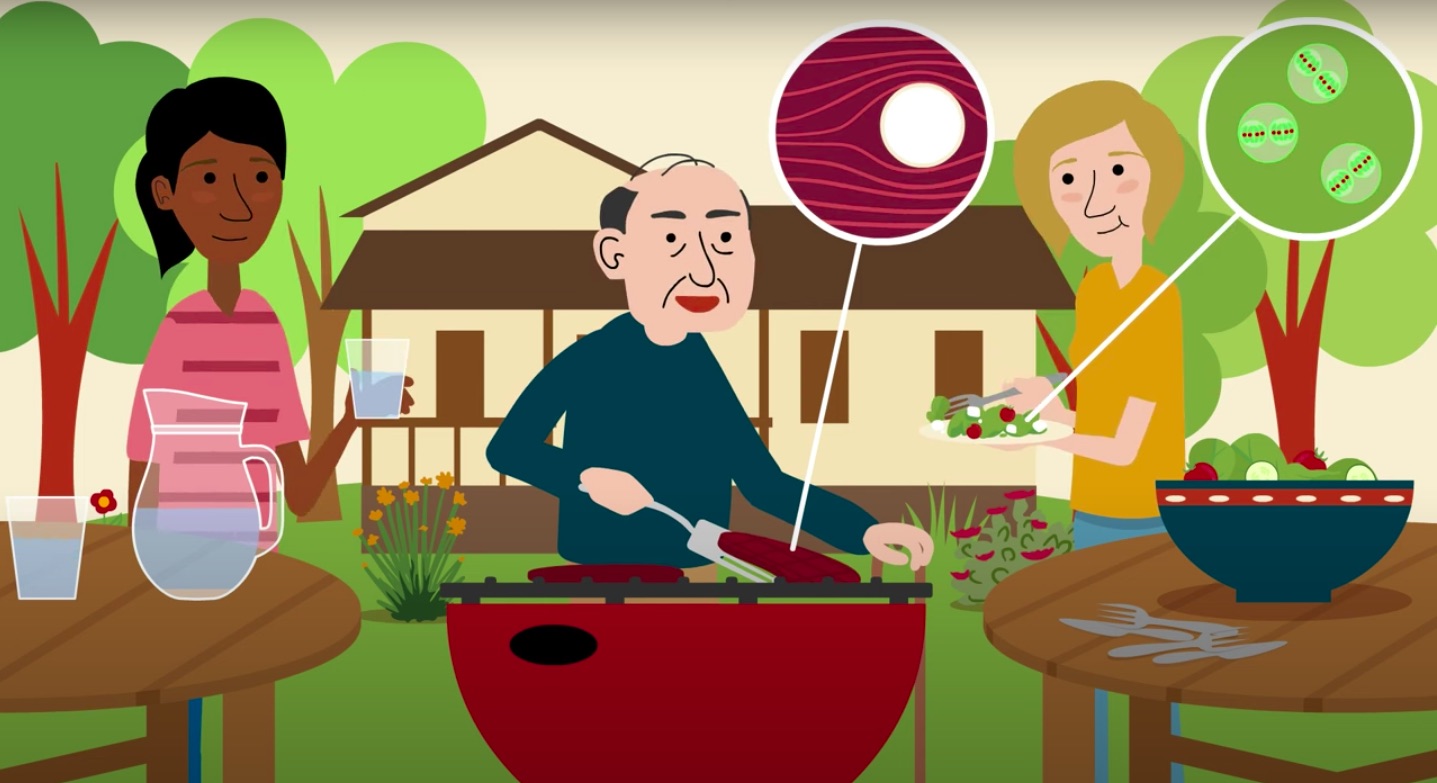
Unraveling toxoplasmosis: animation promotes understanding of the world’s most successful parasite
Innovative audiovisual in partnership with USP helps to inform and educate the general public about Toxoplasma gondii
11/08/2023
Audiovisual informed the challenges and importance of early diagnosis and had the participation of health professionals
In a pioneering collaboration between the University of São Paulo (USP), the Moredun Research Institute (MRI), from Scotland, and talented animators, a new approach to disseminating scientific knowledge was launched. The animation, entitled “ Unraveling Toxoplasmosis ” , in the Portuguese version, or “ Tackling Toxoplasmosis ” , in the English version, helps in the in-depth understanding of toxoplasmosis, a parasitic disease that affects millions of people around the world. The video is a short, fun and engaging animation that describes the life cycle, transmission routes and control options of the tiny parasite of enormous veterinary and public health importance, described as the most successful in the world.
For the creation of the audiovisual, the team responsible for the project, composed of researchers from USP, MRI, and specialists in animation, joined efforts to transform complex information into an easily understandable display. The video combines scientific rigor with playful elements, in order to reach audiences of all ages and levels of knowledge. With a visually appealing approach, it combines immersive storytelling with detailed, research-backed graphics. Throughout the animation, the viewer is taken on an educational journey through the life cycle of the parasite, from its entry into the human organism to its reproduction and dissemination.
The video goes through the stages of the life cycle of the Toxoplasma gondii parasite , explains how it is transmitted to humans and the possible symptoms of the infection. The lifecycle and transmission routes can be quite complicated, but the animation makes it easy to follow and shows all the key points. One of the highlights of the audiovisual is the clarity with which it addresses the different forms of transmission and the risk factors associated with the disease. In addition, preventive measures that can be adopted to avoid contamination and reduce the risk of spreading the disease are presented. The production highlights the importance of good hygiene practices and food care, as well as the need for medical follow-up in cases of suspected or confirmed diagnosis of toxoplasmosis.
“In this collaborative project, innovative epidemiological, immunological and molecular aspects of this protozoan are being investigated, but we think it would also be essential to open a space of proximity between science and the community in general, exploring the concept of One Health, so watch this video of publicizing and raising awareness about toxoplasmosis on social media and the response we are getting is very gratifying”, highlights professor Dr. Hilda Fátima de Jesus Pena, from the Faculty of Veterinary Medicine and Zootechnics (FMVZ) at USP, who participated in the project .
Still according to her, the objective of the project was to create an educational tool that could be used both in schools and in public health contexts, in order to simplify the scientific concepts of toxoplasmosis, maintaining precision and research foundation. The scientific animation, which is already being recognized internationally for its innovative approach and positive impact on disease awareness, demonstrates the power of collaboration between different areas of knowledge for the benefit of society. The audiovisual is part of the research project “ Characterizing the Virulence of Toxoplasma gondii : the role of the host and the pathogen”, developed with resources from the State of São Paulo Research Foundation (FAPESP), at the Department of Preventive Veterinary Medicine and Animal Health (VPS), at FMVZ/USP, in partnership with the Moredun Research Institute (MRI), at Scotland. The team of Brazilian researchers is formed by Dr. Hilda Fátima de Jesus Pena, Dr. Marcos Amaku and Dr. Daniela Pontes Chiebao.
In addition to being available on online platforms, the animation will be distributed in schools, health clinics and other institutions in partnership with the Ministry of Health, with the aim of reaching as many people as possible. Initiatives like this one, which combine science with creativity, demonstrate that it is possible to make complex concepts more accessible and thereby increase public knowledge about important health issues. The collaboration between the scientific community and animation artists demonstrates the power of working together to educate, prevent and combat disease, strengthening public health globally.
about the disease
Toxoplasmosis, recognized by the World Health Organization (WHO) as one of the most important foodborne diseases worldwide, can lead to reproductive problems, such as miscarriage. In humans, the disease can also cause significant ocular and neurological problems for the fetus. Toxoplasmosis is caused by the protozoan Toxoplasma gondiiand can be transmitted to humans through contact with feces of infected cats, ingestion of contaminated food such as undercooked meat and contaminated water, or, less frequently, through blood transfusions and vertical transmission from mother to fetus during childbirth. pregnancy. While most cases are asymptomatic or have mild symptoms, individuals with weakened immune systems or pregnant women can experience serious complications.
The parasite is widespread and can infect all warm-blooded animals, but many people have never heard of it and don’t know how it spreads. In some parts of the world, such as South America, strains of the parasite can cause serious illness, even in healthy people. Although it is a widespread parasite, there are ways to control and prevent infection in people and animals. Education and the dissemination of scientific knowledge in an accessible way are essential and can significantly contribute to effective prevention and treatment.










